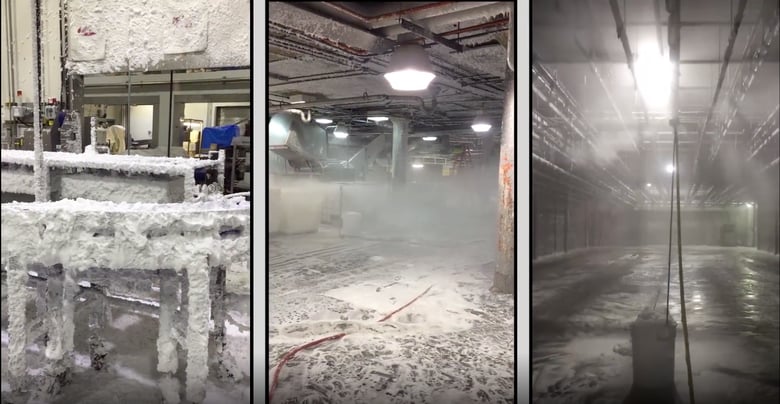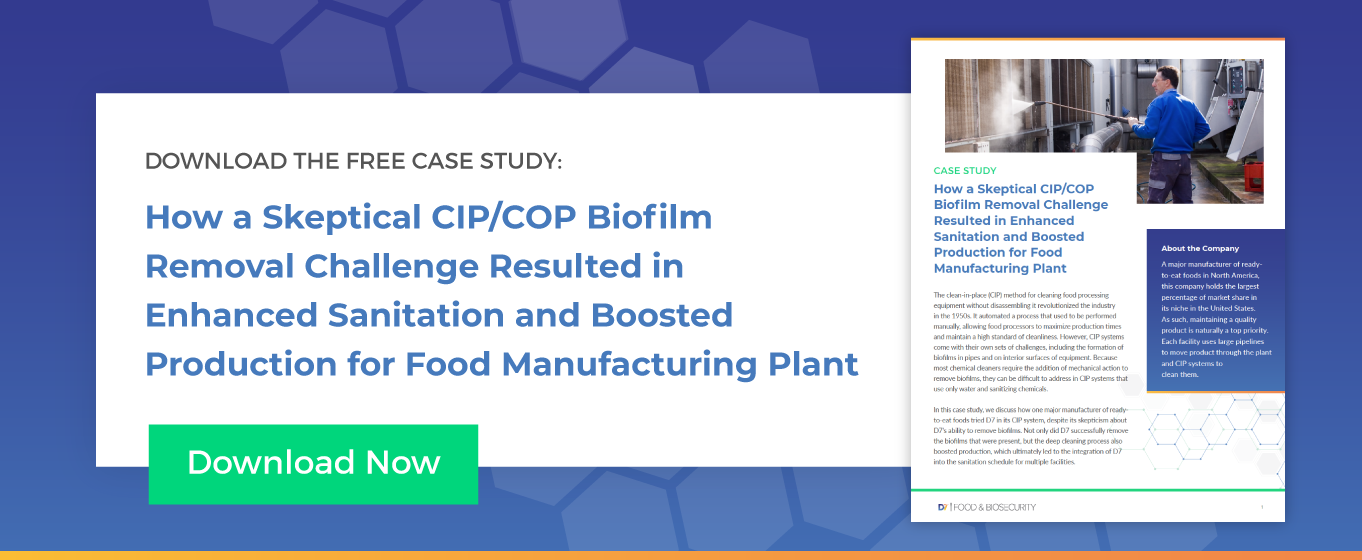
The presence of biofilms in a food processing environment can be devastating to a brand, especially if a recall is required due to an outbreak. In addition to the health risks to consumers, persistent biofilms can impact productivity in a facility and contribute to product loss, both of which can be costly to companies. Identifying products that are able to remove biofilms and creating a daily sanitation schedule should be a top priority for every food safety quality assurance manager.
D7 is a proven solution for biofilm removal. Formulated to kill 99.9999% of bacteria in biofilm*, this innovative product is also easy to apply as a foam or spray, making it suitable for biofilm treatment in any food processing environment. Unlike other products that require mechanical action to penetrate biofilms, D7 does all the work for you as it penetrates biofilm, killing the bacteria living there. The science speaks for itself.
*Disclaimer: Review D7 product label before use
Efficacy Against Staphylococcus aureus Biofilm
In a study titled Evaluation of Disinfectant Efficacy against a Biofilm - Single Tube Method, D7 was shown to be effective against Staph biofilm. D7 demonstrated a 99.9999% reduction at ten minutes exposure time at 21±2°C.
Why These Test Results Matter
Pathogens such as Staph, Listeria, E. coli, and Salmonella pose a threat to food safety, especially when biofilms develop. These studies show that D7 is effective against some of the most common bacteria in food processing.
Removing Biofilms in a Food Processing Environment
Although it is possible to remove biofilms through physical methods, using a chemistry like D7 is more cost-effective because the product requires no mechanical action to kill biofilm bacteria. Once mixed at the recommended concentration, the solution is applied to food processing surfaces that are clean of debris, for the specified contact time and then rinsed with potable water. This is a much faster process than scrubbing every square inch of a facility in an effort to remove biofilms.
The foam application clings to vertical and overhead surfaces, allowing you to effectively sanitize ceilings, walls, and equipment surfaces with minimal manpower. In addition to deep cleaning protocols for removing biofilms, D7 can also be used as a daily sanitizer to kill biofilm causing bacteria, like Staphylococcus and Pseudomonas, before they start the production of biofilms.
Use D7 in Your Facility
When you work with Decon7, our professional field staff performs a site visit to help you create a sanitation process that matches your specific needs. Whether you are dealing with an outbreak or being proactive about plant maintenance, we’ll work closely with you to identify the most appropriate application routine for your food processing facility. To learn more about sanitation best practices and how you can efficiently and cost-effectively reduce the risk of an outbreak in your facility, read The Busy FSQA Manager’s Guide to Proactive Plant Sanitation.


